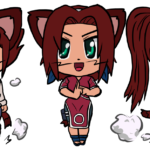
Easy backups with The 3-2-1 Rule
They say people who take backups seriously are those: who’ve lost their data before, or know someone who has. Avoid being the first guy by learning how to backup your website and computer with this one simple rule!
The 3-2-1 Rule
- Three copies
- In at least two different formats or media
- With one offsite backup
Three copies
The original data is included in that three, so you only need two other copies. The more the better, but this also means you’ll spend more on storage and time, so two backups is good enough to cover most situations.
In at least two different formats/media
Having all your backups in just one format is just putting all your eggs in one basket. The format could be anything such as another hard drive, flash drive, DVD, etc. I suggest external hard drives since they’re tougher and harder to misplace compared to flash drives.
With one offsite backup
The other copy should be taken offsite to cover you if fire, earthquakes, floods, etc. occur at your home or workplace. Hard drives and the like can be stored in another location, perhaps a friend’s house. Or store your data on cloud storage services like Google Drive and Dropbox since they count offsite and may be the better choice for most people since they’re free and can be accessed from anywhere.
What to backup
Everyone should backup their whole system every month, or at least their important files. And I suggest than everyone make a bootable USB flash drive just in case your OS gets trashed for some reason.
Artists and writers should backup their working files (like .psd, and .clip), art/writing references, and website bookmarks, if any. Include your software too if you can.
Website owners (if you have a webcomic or an online portfolio) should make a website backup every month. Every week if possible, but only if you’ve updated in the site within the week.
What I do
Here’s how I backup my stuff as well as the equipment and software I use. Feel free to follow this yourself or make some changes! Contains Amazon affiliate links, and I’m not affiliated with the other websites I link to.
- I bought an external hard drive that’s double the space that I use, in my case, a 2TB external drive for my 1TB internal hard drive. The extra space is to include multiple copies of past backups. I placed this on top of my desktop.
- I got a rugged 8GB flash drive and made it bootable using my Windows 8 installer. I forgot which software I used, but many are available for free online. Hid this in a drawer nearby.
- The backup software I use is EaseUS Todo Backup, which allows you to make System Backups (backups your whole system, including all files and settings). I also use its Smart Backup feature, which automatically backups files and folders that I’ve chosen. I make System Backups every month, and keep past copies of up to 3 months. Oldest backups are replaced.
- I use Google Drive to sync all important files that I can fit within the 15GB Free plan. I’ve synced all my artwork, writing, reference pics, and website backups (Cat Nine of course) in there. I don’t leave Google Drive running all the time since it interferes with Clip Studio’s saving, so be careful of that! I also have Dropbox, but their Free plan only has 2GB, so I’ve reserved it for extremely important files. I sync to Google Drive every week. If I need to or have the funds to spare, I would upgrade my Drive plan, or use Backblaze since it has unlimited data for only $5/month.
- Yes, that means my System Backups only exist in my external drive since they don’t fit in Drive’s Free plan, but that’s why I only backup important files in the first place!
- I make a Full website backup using cPanel every month, and a weekly backup using the All-in-One WP Migration WordPress plugin. The Full website backup backups everything including other sites like Classic Cat Nine, while All-in-One only backups one site, in this case, Cat Nine. I don’t backup the other sites since they’re less important. I keep three months worth of Full backups, and ten previous weekly backups. Oh, I also make All-in-One backups before and after I update plugins or make changes in the site. The All-in-One backups are stored inside my site’s FTP server, so I usually delete them before I make Full backups since it increase the size of Full backups. All of these are included in System and Smart Backups, and whenever I sync to Google Drive.
And there you have it. I know backing up can be tedious to some, but I’d rather stay on the safe side don’t ya think? I’ve also included some notes about additional notes below, but they’re not necessary reading.
Additional notes
- Hard disk drives last four years on average so if your hard drive is about about that old, now might be a good time to buy a new one. You can still use your older hard drive for less important files, games, and the like.
- Make sure to choose reliable hard drives since a few specific models (and even manufacturers) are known die rather quickly. Backblaze publishes some stats about hard drive reliability regularly. Latest one as of this writing over here.
- Apparently, SSDs are not only fast, they’re extremely reliable and last longer than hard disk drives too. However, they’re pricier and have lower space. I’d get SSDs if I can spare it, but if you’re not gaming, I don’t think they’re necessary.
- On that note, consider hybrid drives which combines aspects of both, though you usually can’t directly access the SSD portion of the drive. Most hybrids apparently work by recording which files you use the most often, and then loads/copies those to the SSD portion so it’ll load faster next time. I currently use a 1TB FireCuda hybrid drive. While pricier than standard HDDs, my computer certainly did boot up quicker and loads frequently used programs faster. I’ve also chosen it for the generous 5-year warranty, although I still plan to get a new hard drive when it reaches its 4th year.








